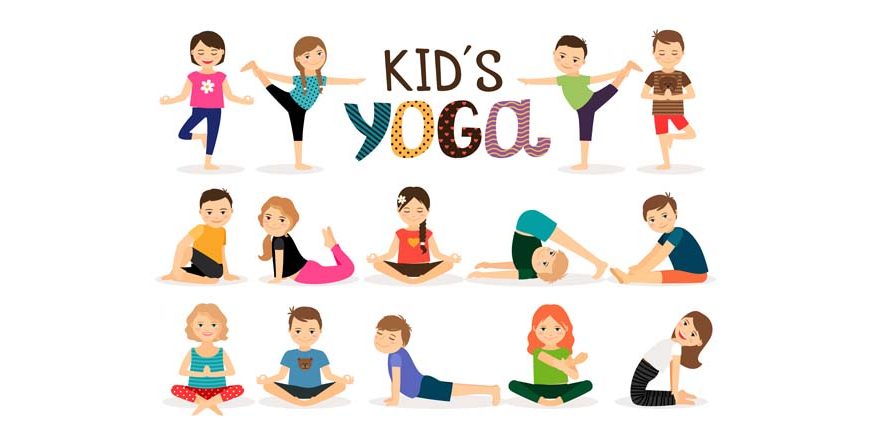You must have heard about yoga’s incredible benefits—improved flexibility, stress relief, better sleep, and mental clarity. But did you know that children can practise yoga too and can be more natural at it than adults? While grown-ups may struggle to still their minds and focus on their breath, children tend to embrace yoga with a sense of wonder and playfulness.
So, this International Yoga Day, why not turn it into a family activity? Practising yoga together, even for just a few minutes, can become a special time of connection and calm. It’s not about perfect poses but about shared moments of movement, breath, and joy. In this article, we discuss a few yoga poses you can try with your little one this International Yoga Day. But before that, let’s discuss the benefits of yoga for kids and a little about when yoga day is celebrated on and how.
When is International Yoga Day Celebrated On?
Every year on June 21, millions around the globe come together to celebrate International Yoga Day, acknowledging its power to transform lives.
Before diving into the benefits, let’s look at some key information on International Yoga Day. The concept was first introduced by Indian Prime Minister Narendra Modi during a speech at the United Nations General Assembly on September 27, 2014. He highlighted the many wellness benefits of yoga and proposed a dedicated day to celebrate its practice.
Soon after, the UN passed a resolution supported by 177 countries, declaring June 21 as World Yoga Day. The date was chosen because it marks the summer solstice, the longest day of the year in the Northern Hemisphere, and is a time of spiritual significance in many cultures. The first International Yoga Day was celebrated on June 21, 2015, and since then, it has become a global movement promoting health, peace, and mindfulness.
How is Yoga Day Celebrated?
Each year, yoga day is celebrated with events around the world. These include mass yoga sessions in parks, schools, corporate offices, and public spaces. Families, schools, and communities come together to perform simple yoga poses, breathing exercises, and meditation practices.
In schools, children participate in special yoga classes, competitions, and workshops where they learn fun asanas and the importance of mindfulness. The focus is on making yoga enjoyable, interactive, and age-appropriate.
So, the next time you hear someone say, “Happy Yoga Day!” know that it’s not just a greeting. It’s a call to embrace a healthy and meaningful lifestyle.
Benefits of Kids’ Yoga
Here are some benefits of kids’ yoga:
- Improves Focus and Memory
- Boosts Physical Strength and Flexibility
- Increases Self-Esteem and Confidence
- Promotes Discipline and Responsibility
- Fosters Imagination and Creativity
One of the most appreciated benefits of kids’ yoga is its ability to enhance concentration and memory. Yoga poses often require children to focus on alignment, breathing, and movement simultaneously, sharpening their mental faculties. This can lead to better academic performance and increased attentiveness in the classroom.
Yoga strengthens muscles and improves flexibility, posture, and balance, which is particularly beneficial for young children, who develop key motor skills during their early years. Practising poses like Ustradana or Camel Pose and Dhanurasana or Bow Pose can help them strengthen their back, thighs, and abdomen while enhancing overall endurance and body awareness.
Mastering a yoga pose gives children a sense of accomplishment. When they balance in Tree Pose or stretch deeply in Fish Pose (Matsyasana), they feel more connected to their bodies and proud of their progress. This directly improves their self-esteem and builds inner strength.
Yoga teaches children to follow instructions, stay patient, and respect their and others’ boundaries. Through daily practice, kids learn self-discipline, a skill that can be very useful in both personal and academic life.
Yoga isn’t just physical; it’s imaginative. When children are asked to become trees, lions, or mountains through poses, it sparks creativity. Yoga also includes stories, songs, and games that keep their minds playful and engaged.
Fun and Easy Yoga Asanas for Kids
Here are five exciting and easy yoga poses you can do with your little one this International Yoga Day:
- Ustrasana (Camel Pose)
- Kneel on the floor with knees hip-width apart.
- Keep your hands on your hips.
- Slowly lean back and place your hands on your heels.
- Look up gently and hold the pose while breathing slowly.
- Stay in this position for 5 to 10 breaths, then slowly come back up.
- Matsyasana (Fish Pose)
- Lie down on your back with your legs straight.
- Keep your arms under your hips with palms facing down.
- Gently lift your chest and head off the ground.
- Drop your head back so the top of your head touches the floor.
- Hold for a few breaths, then relax.
- Dhanurasana (Bow Pose)
- Lie on your stomach with your arms at your sides.
- Bend your knees and hold your ankles with your hands.
- Inhale and lift your chest and legs off the floor at the same time.
- Try to balance on your tummy like a bow!
- Hold for 15–20 seconds while breathing, then gently lower back down.
- Balasana (Child’s Pose)
- Kneel on the floor, sitting on your heels.
- Bend forward and rest your forehead on the mat.
- Stretch your arms forward or keep them beside your body.
- Take slow, deep breaths and stay for a minute or more.
- Gomukhasana (Cow-Face Pose)
- Sit up straight with your legs stretched out.
- Bend your left leg and bring it under your right hip.
- Now, bend your right leg and stack it over the left thigh.
- Raise your right arm, bend it behind your back.
- Bring your left arm from below and try to clasp your hands.
- Hold the pose for 30 seconds, then switch sides.
This yoga pose strengthens the back and thighs and helps with posture.
Here’s how to do it:
This asana opens up the chest, improves breathing, and digestion.
Here’s how to do it:
This yoga pose boosts energy, stretches the back, and reduces stress.
Here’s how to do it:
You can do this asana with your little one whenever they need to calm their mind. Alternatively, this yoga pose is good for stretching the back and shoulders.
Here’s how to do it:
This asana improves flexibility, especially in shoulders and hips.
Here’s how to do it:
These poses can be practised at home or school. With regular practice, children will improve physically and feel more balanced mentally and emotionally.
Conclusion
Incorporating yoga into a child’s routine doesn’t need to be rigid or complicated. A few minutes each day can create remarkable changes over time. Whether it’s practised at school, at home, or in a park on International Yoga Day or otherwise, the effects of yoga on a child’s mind and body are undeniably powerful.
Let’s celebrate International Yoga Day by investing in the well-being of our children through yoga. With growing support worldwide, we’re building a future generation that’s healthier, calmer, and more connected to themselves and their surroundings.
Besides yoga, there are different ways to keep your kids healthy and more connected to themselves. For instance, you can enrol them in Zumba or other dance classes. Want to know the benefits of Zumba or similar dance classes for kids? Check out our blog, Zumba Classes For Kids: Dance, Exercise, And Fun! Meanwhile, if you are looking for more insights on your child’s health and development, visit EuroKids Blogs.
Looking for a preschool that blends fun, fitness, and learning? At EuroKids Preschools, our play-based curriculum focuses on nurturing physical, mental, and emotional development because we believe a healthy child is a happy learner.
















